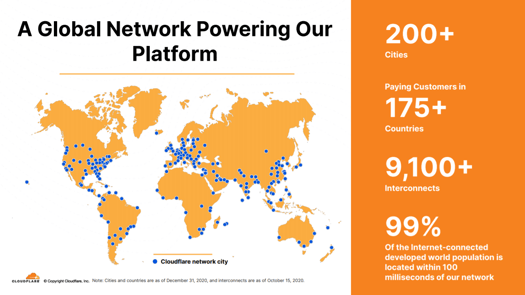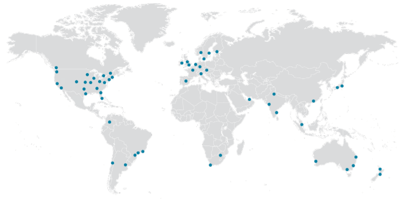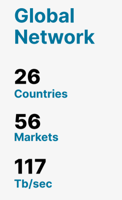Someone shared Albion VC's SaaS evaluation framework with me recently a while back (as long as I've been procrastinating on this article 😆) and I really liked how structured and detailed it was. I will be using this framework to compare 2 popular cloud stocks, Cloudflare and Fastly
Check out the framework here: https://www.albion.vc/sites/default/files/SaaS-AlbionVC.pdf
Albion VC's framework focuses on answering 5 key questions:
- Does the company provide a valuable service to its customers ?
- Is the business model sustainable ?
- Is there product/market fit in an attractive market ?
- Can the company scale profitably ?
- What is the company worth ?
It also provides some benchmark figures for commonly used SaaS metrics in the Appendix.
In this article, I will compare the 2 SaaS companies and evaluate them against this framework. All metrics are in annualised figures unless otherwise stated
Introducing Cloudflare and Fastly...
Since I'm vested in Cloudflare, I decided to see how it compares to one of its competitors - Fastly. Both are CDN providers and provide cloud storage and security services.
| Cloudflare | Fastly | |
| Market Cap | 25.361B | 9.157B |
| 2020 Revenue | 431M | 291M |
| Free Cash Flow | -91M | -57M |
| Paying customers | 111,000 | 2084 |
| Enterprise customers ≥$100,000 annualized revenue |
828 (46% of revenue) | 324 (89% of revenue) |
Fastly is earning more than half of Cloudflare's revenue with just a fraction of the number of customers that Cloudflare has. Fastly's Enterprise-led strategy depends heavily on retaining their large customers.
My take: I prefer Cloudflare's diverse customer base for lower earnings volatility
#1 Does the company provide a valuable service to its customers ?
A successful SaaS company is one that is able to retain their customers while adding new, paying customers over time. This creates a strong customer foundation for upselling and cross-selling products and supports strong revenue retention.
| Cloudflare | Fastly | |
| Gross Churn | <10% | Not available |
| Net Churn (% of 2020 Rev) | Not available | 1% (2.91M) |
| Net Revenue Retention (NRR) excludes churned customers |
117% | 137% |
| NPS unofficial stats from Comparably | 58 | 47 |
The two biggest roadblocks to evaluating this section are
- the lack of consistent metrics and calculations used by both companies; and
- some metrics are undisclosed (eg. Engagement, Usage, Churn trends)
This isn't surprising as companies want to paint themselves in the best light possible and to avoid revealing too much of their hand. I have tried to make the best comparison possible based on the term definitions provided by each company. I highly encourage you to read through the fine print in the respective quarterly/annual filings for better context.
Both companies meet or exceed Albion VC's benchmarks for NRR >90% and churn rates
My take: The lack of consistent metrics hinders proper comparison but Fastly has an edge over Cloudflare with its higher NRR
#2 Is the business model sustainable?
SaaS revenues have an annuity nature where sales and marketing (S&M) costs are expensed up front while revenues are recognised evenly over the lifetime of the customer. The average S&M cost of customer acquisition is much higher than the cost of retaining customers. In other words, once a customer is acquired, there is a certain measure of revenue security with a subscriptions (read: recurring) revenue model for as long as the customer remains a customer.
In this section, we look at profitability and cash generation to assess the long term viability of the business.
| Cloudflare | Fastly | |
| GAAP Gross Profit % | 76.6% | 58.7 % |
| Sales & Marketing costs | 217.9M | 101.2M |
| EBITDA pre sales & marketing costs (EBITDASM) | 93.1M 21.6% of 2020 Rev |
(6.3M) -2.2% of 2020 Rev |
| yoy Revenue growth rate | 50% | 45% |
| The Rule of 40 | 71.6% | 47.17% |
Albion VC calculates the Rule of 40 (%) as Growth rate + EBITDA margin > 40% where Growth rate is defined as yoy growth rate of monthly recurring revenue (MRR). Here, I use Revenue Growth rate as an approximation due to lack of MRR values.
Both companies have very high yoy revenue growth rates and GAAP gross profit margins. Albion's benchmark for EBITDASM is 45-55% which is so high that both companies fail to meet this benchmark.
My take: Cloudflare takes the win here with a significantly higher gross profit margin, EBITDASM and Rule of 40
#3 Is there product/market fit in an attractive market?
Valuable product/service, check. Sustainability, check. Diving deeper into customer metrics, we look at how well the business is able to get existing customers to increase their contract value (upsells and cross sells); and how many more new customers can the business can reasonably acquire?
| Cloudflare | Fastly | |
| Total Addressable Market (TAM) | 72B Figure only provided by Cloudflare, but still applicable to Fastly since both companies operate in the same space |
|
| Geography of paying customers | 175 countries | 26 countries |
| Are customers using more products? |
IPO: 70% of paying customers are using 4 or more products End 2020: 88% of paying customers are using 4 or more products |
Average enterprise customer $607,000 to $782,000 |
| Customer growth |
CAGR* in customer count over past 3 years $100k customers: 73% $500k customers: 86% $1M customers (Enterprise): 100% |
Enterprise customer count ↑ by 12.5% in 2020 288 to 324 Total customer count ↑ by 19.5% in 2020 1743 to 2084 |
*CAGR: Compound Annual Growth Rate

Cloudflare


Fastly
The differences between Cloudflare and Fastly's strategies are quite clear in this section. Where Cloudflare aims for a sticky product and to acquire more customers, Fastly seeks to upsell to its Enterprise customers. Given the differences, it may not make sense to compare the strategies.
My take: Draw, both companies are committed to their respective strategies and it seems to be working well for them so far.
#4 Can the company scale?
Understanding the business model and Go To Market strategy are key ways to evaluate if a company can scale. In this section we review sales efficiency metrics to evaluate if the company can continue scaling at this rate in the long-term
| Cloudflare | Fastly | |
| S&M costs (as a % of total revenue) |
50.54% | 34.79% |
|
CAC (in order from Q12020 to Q12021) |
72.15% 112.43% 84.06% 76.34% |
244.97% NA (negative gross margin) 212.89% 25.35% |
Using the equation for CAC payback shared in this article, I charted out the CAC ratio and payback period for the past 4 quarters. CAC is the percentage of S&M costs that can be recovered in 1 year by new customers acquired within the same quarter. The CAC payback period refers to how many months it will take to recover the investment in S&M of that quarter
Interestingly, Fastly's revenue is not as stable as Cloudflare. Their revenue did not increase in tandem with the increase in S&M costs in Q42020, and this has severely impacted its CAC ratio and payback period post-Q42020. The data trends also suggest that Fastly is taking longer than 2 quarters to see the effects of spending on customer acquisition. If we consider how Fastly is mainly targeting Enterprise customers which are notorious for long sales cycles, this is not so surprising.
Although Cloudflare is spending a higher percentage of its revenue to acquire new customers (reflected in its S&M costs), we see the effects of this expenditure in each subsequent quarter (increasing revenue). Cloudflare is also keeping its CAC payback period relatively flat so I'm not too concerned about the high S&M percentage. Their payback period is below the median for SAAS companies so I'm not too concerned.
My take: Cloudflare takes the win here with stable and increasing revenue, stable gross margin and acceptable CAC payback period. A company with a stable gross margin builds shareholder confidence and is more well positioned to weather unexpected downturns.
#5 How much is the company worth?
This part is tricky because Cloudflare and Fastly are not the same size so Cloudflare has an advantage with more extensive network effects and economies of scale.
So instead of comparing pure figures, I've used more comparative metrics like growth % and worth as a % of revenue. Some of the figures in the table are repeated in earlier sections.
| Cloudflare | Fastly | |
| GAAP Gross Profit % | 76.6% | 58.7 % |
| Net Revenue Retention (NRR) excludes churned customers |
117% | 137% |
| yoy Revenue growth rate | 50% | 45% |
I would love to compare the Annual Recurring Revenue growth rate of both companies as I think that's a more accurate representation of the company's future worth. But both Fastly and Cloudflare do not share their ARR figures. The closest we have is revenue growth. And since both companies have pretty similar revenue growth rates, we look to Net Revenue Retention (NRR) as a complimentary metric. Fastly has a better NRR which means it retains more of its existing revenue than Cloudflare.
However, Cloudflare has a higher gross profit %, coming just shy of the 80% that Albion VC considers to be a good benchmark.
In terms of each company's ability to generate cash, it should be noted that both companies are currently unprofitable and are basically burning cash every month 😅
My take: Cloudflare has a higher profit margin and while NRR is decent, it is significantly lower than Fastly's NRR. I consider this round a draw.
Overall Thoughts
Out of the 5 sections, 2 were draws so it turned out to be a pretty close fight (Cloudflare: 2 vs Fastly: 1)
While both companies are very young, Cloudflare is slightly more mature. Their larger size relative to Fastly is a tailwind that helps boost their revenue growth and margins. On that front, Fastly is not able to compete with the economies of scale that Cloudflare has. However, with size comes friction so if Fastly plays its cards right, they have the ability to grow more explosively than Cloudflare. Choose oone or both based on your investment principles!
Invest in Cloudflare for
- (more) stable revenue growth and margins
- the advantages that the dominant player has
- a more diverse customer base
- a shorter (hopefully) timeframe to becoming profitable
Invest in Fastly for
- the advantages that small players have - grow fast and explosively
- future dividends of an Enterprise play
Happy to hear your thoughts in the comments below! :)

